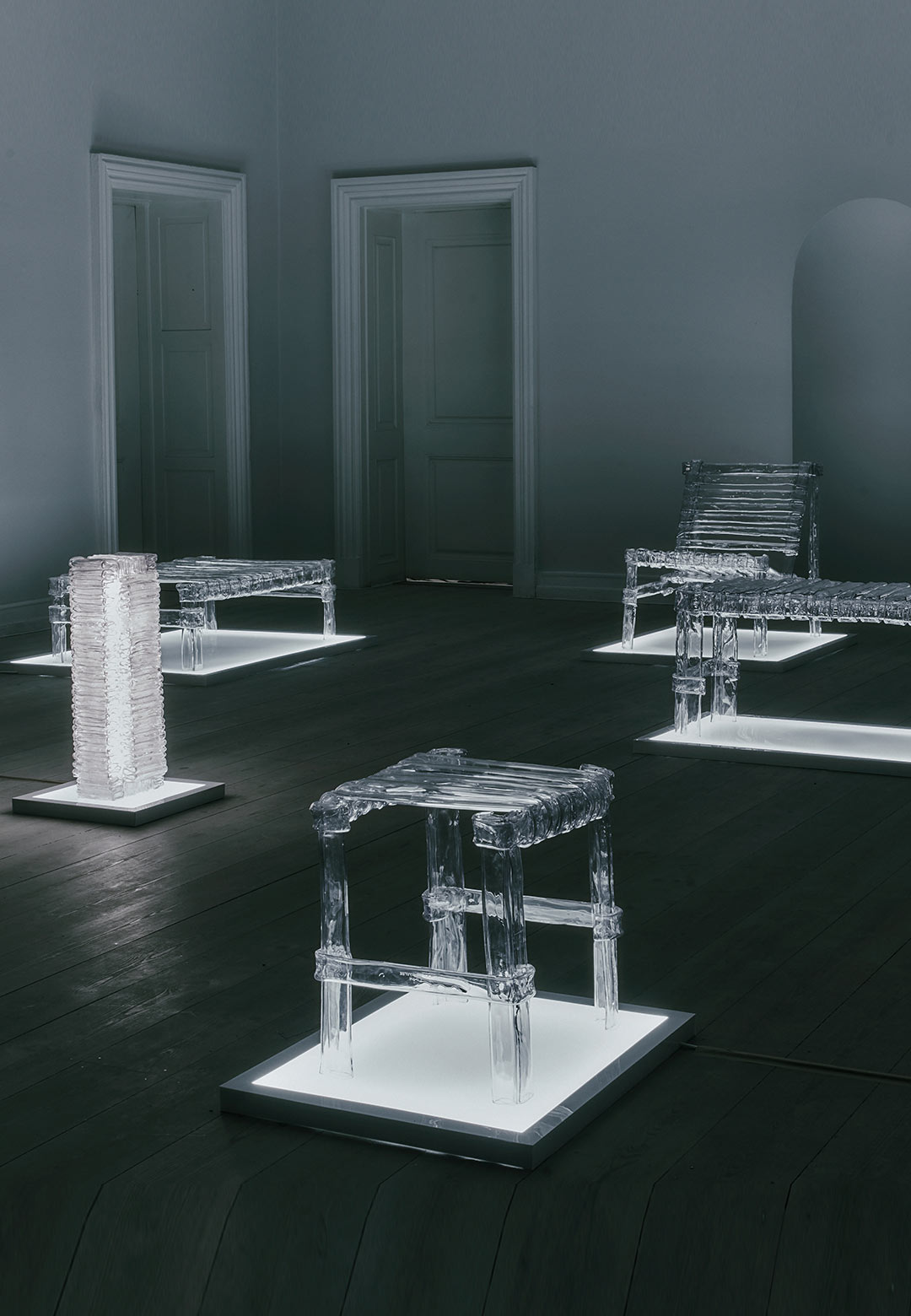The aptly titled exhibition Crafting Plastic challenges viewers' perceptions of plastic as an industrial material, wherein Danish designer Kasper Kyster creates a unique world of ice-like, handcrafted furniture designs and objects made entirely of it. Part of 3daysofdesign this year, the design exhibition is on display at the design event until June 30, 2024, as an exploration of the sensory and functional qualities of plastic. Crafting Plastic features a range of furniture, including chair designs, table designs and lighting designs, all crafted from two-millimetre thick PETG plastic sheets heated and shaped into objects.
The furniture designer purchases plastic sheets that have been precisely measured, and goes on to continuously heat and fold them using a heat gun and a few cloth pieces to produce functional slats. Putting materials and craft above everything else, he strives to make the product designs as circular as possible, for maximum strength and longevity. He warms the plastic even higher at the connection points, forcing the surface to melt and weld together, which results in highly durable bonds.
To emphasise the materiality and the technique instead of the form, Kyster concentrated on creating furniture pieces that are as recognisable as possible. The goal was to design identifiable items that look and perform as they are meant to: a chair unmistakably looks like a conventional chair, and a stool looks exactly like a stool. However, the lamp designs take on a more sculptural aesthetic, since they require a different bending method to function effectively as lights. The product designer lets the innate characteristics of the materials and the craftsmanship take the stage through distinct yet straightforward forms.
“It's the almost ceramic expression that challenges our expectations of plastic and evokes a distinct aesthetic language. Only the imagination limits the design, but the handmade furniture pieces are archetypes, where the familiar meets new materiality and technique,” explains Kyster, who is also one of the co-founders of Ukurant, an award-winning exhibition platform and creative community that showcased objects by 18 emerging designers at the annual design festival in Copenhagen last year. He also asserts that this approach reveals another potential for using plastic more artisanally—everything is handmade, and the specific look that the Crafting Plastic collection reveals can only be achieved through handcrafted methods. The plastic Kyster employs consists of 30 per cent recycled material, which is the maximum percentage he can employ without compromising the structural integrity of the furniture.
The designer contends that using plastic to make furniture is an excellent strategy. Despite the material's negative perception brought about by its commonplace and frequently hazardous use and discarding methods, he believes that creating furniture with plastic is a useful application. He claims that these distinctive pieces demonstrate the possibility of sustainable plastic use, stressing the fact that plastic furniture may be incredibly sturdy and can last a lifetime if cared for appropriately. This method not only highlights the material's lifespan and worth in the context of finely created, handmade furniture but also redefines its sustainability quotient and perception of use. By meticulously hand-crafting each piece, Kyster transforms this industrial material into artistic statements, marrying functionality with aesthetic appeal. With the Crafting Plastic collection, Kyster invites viewers to reconsider plastic's role in design, urging a shift towards more responsible and innovative uses of this ubiquitous material.






 Sign in with email
Sign in with email










What do you think?